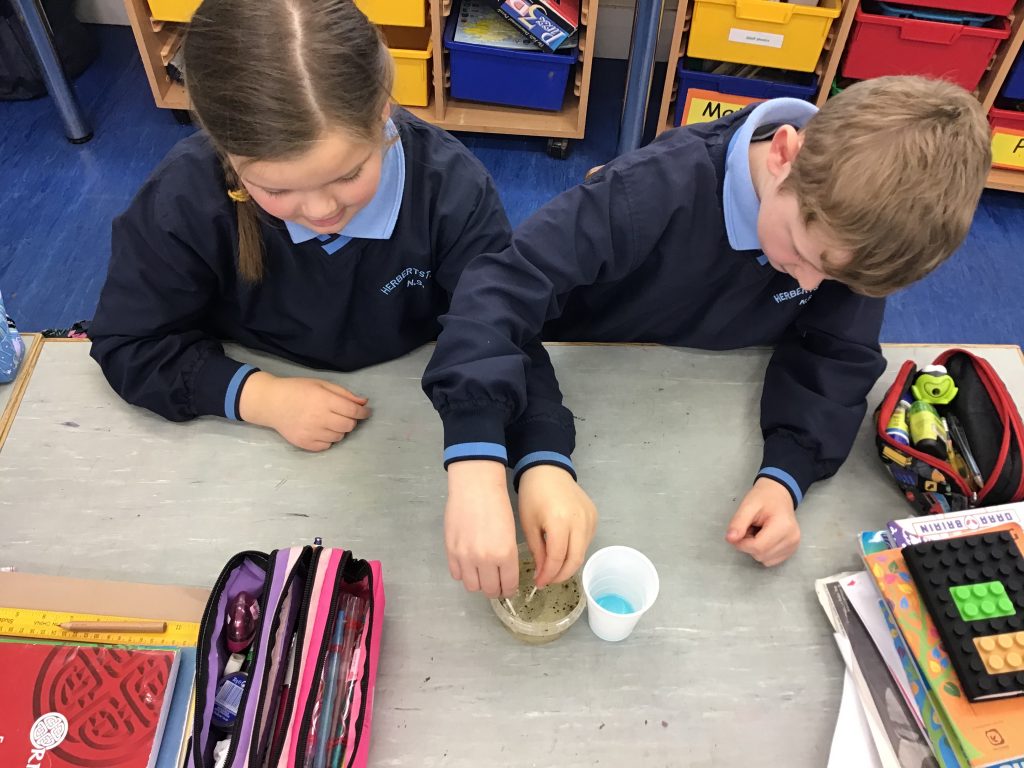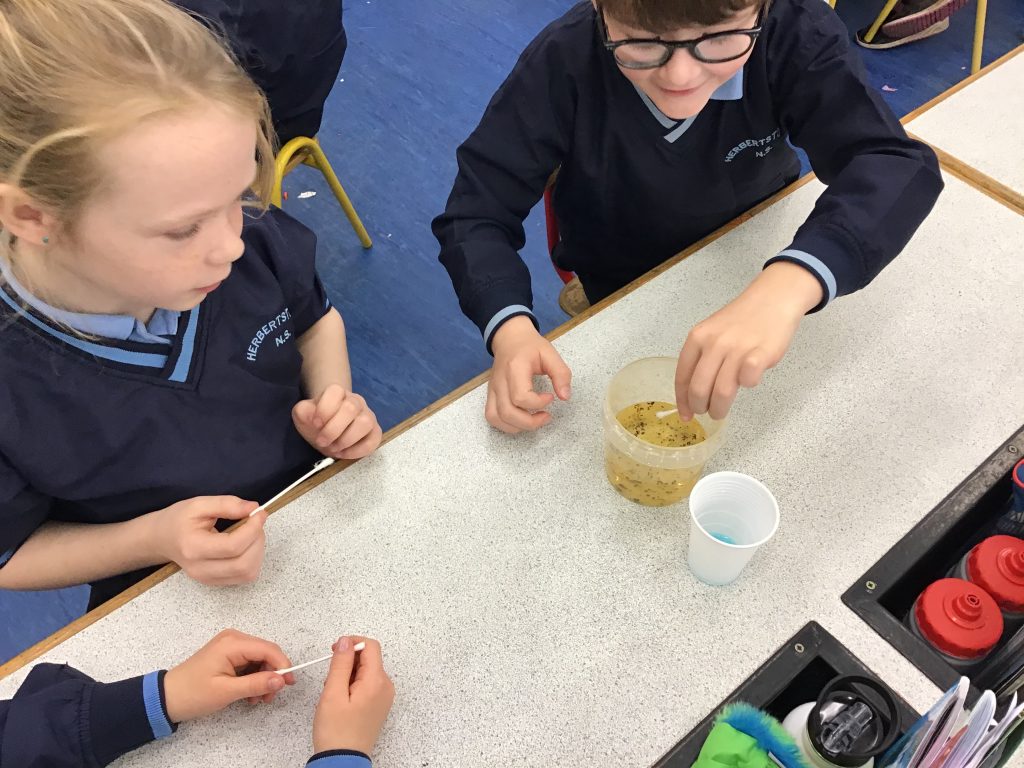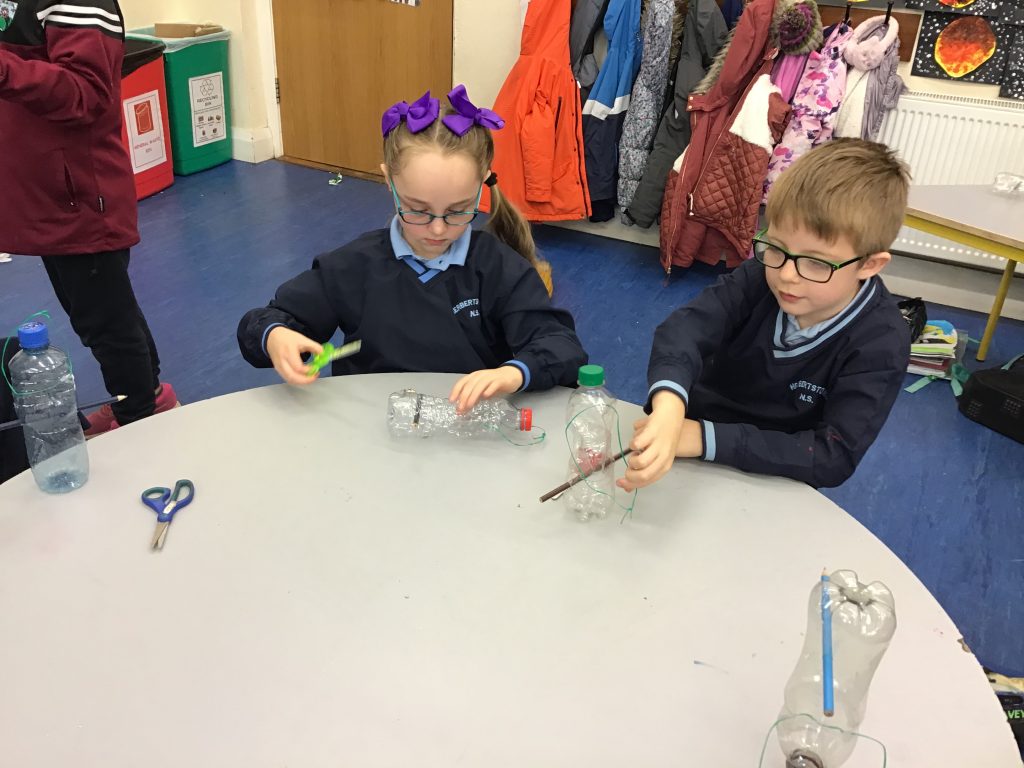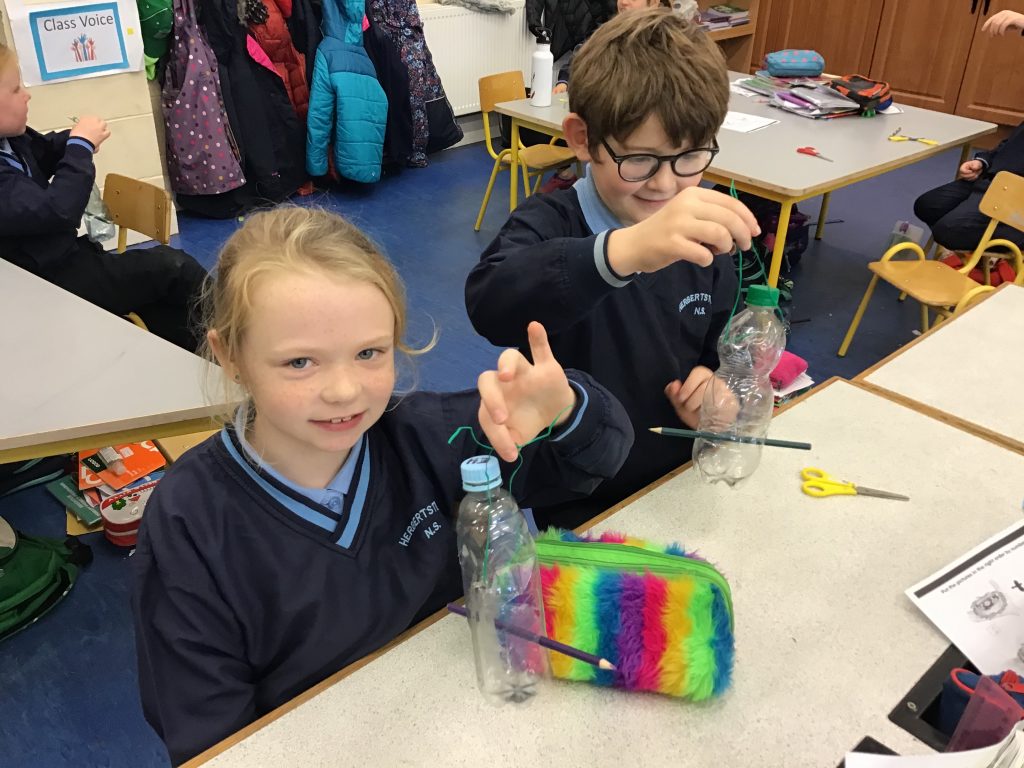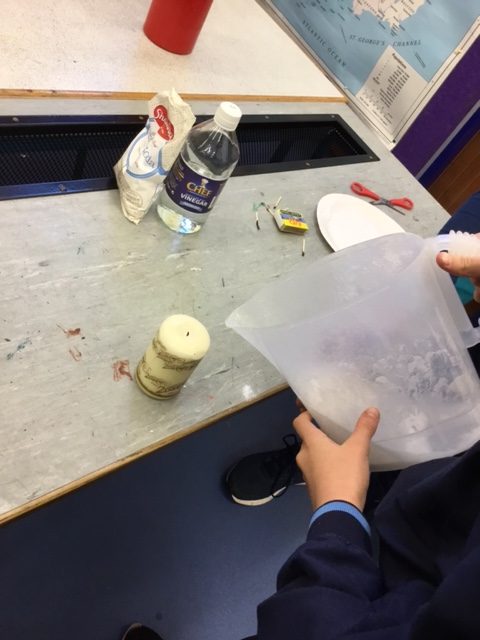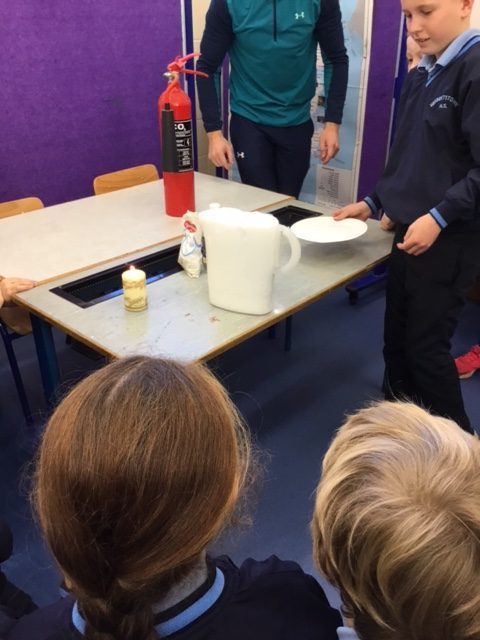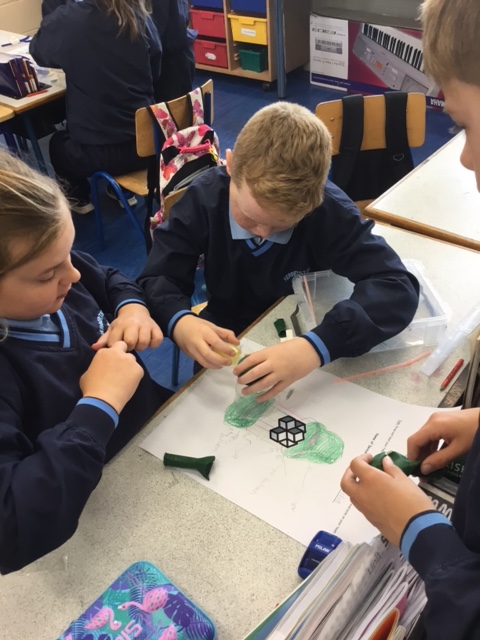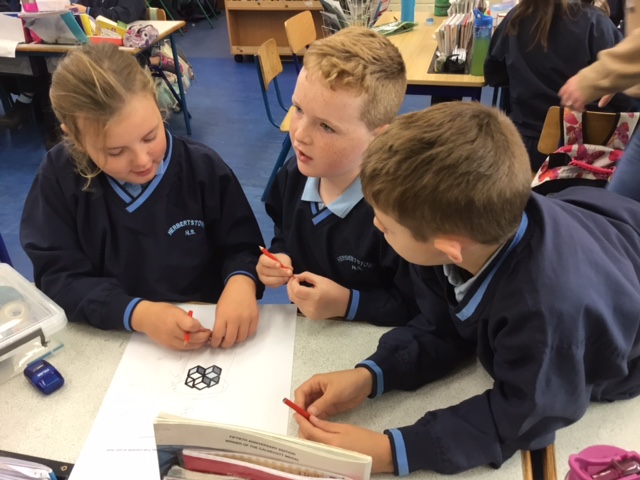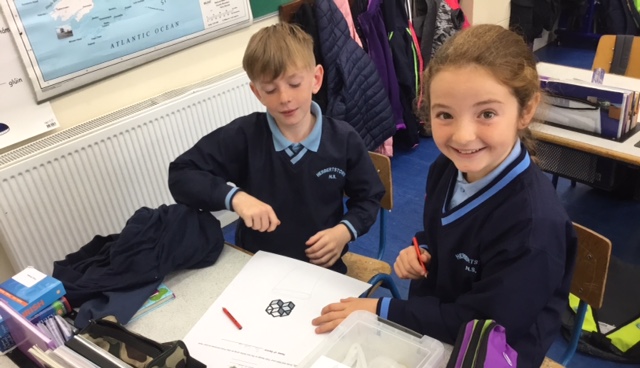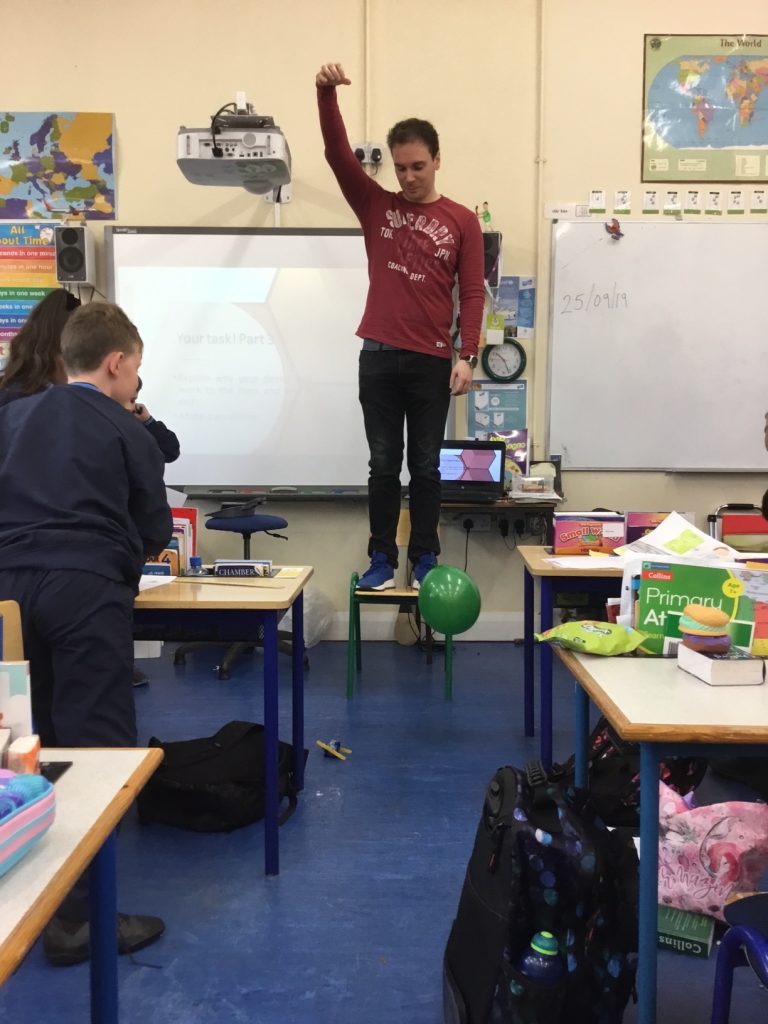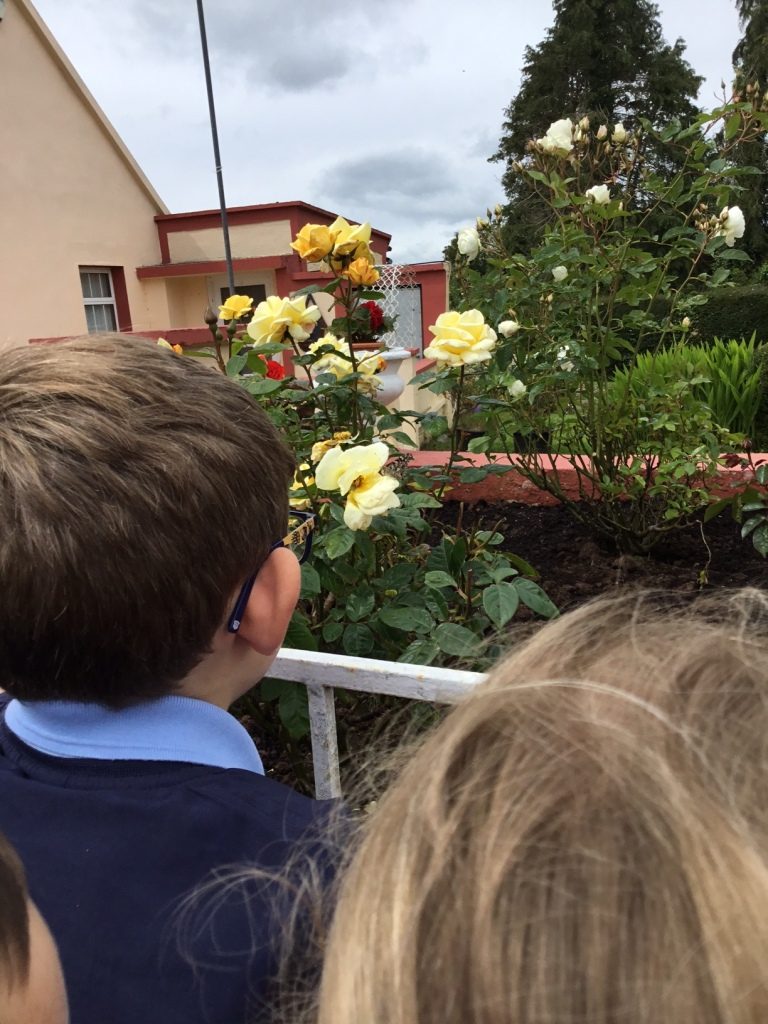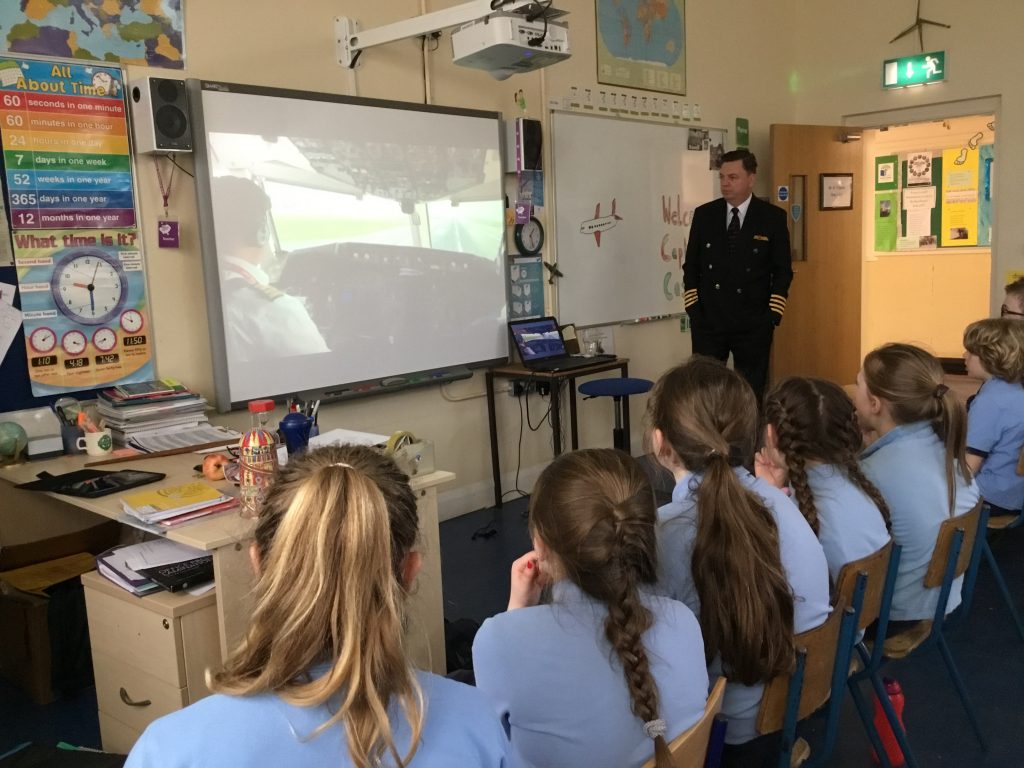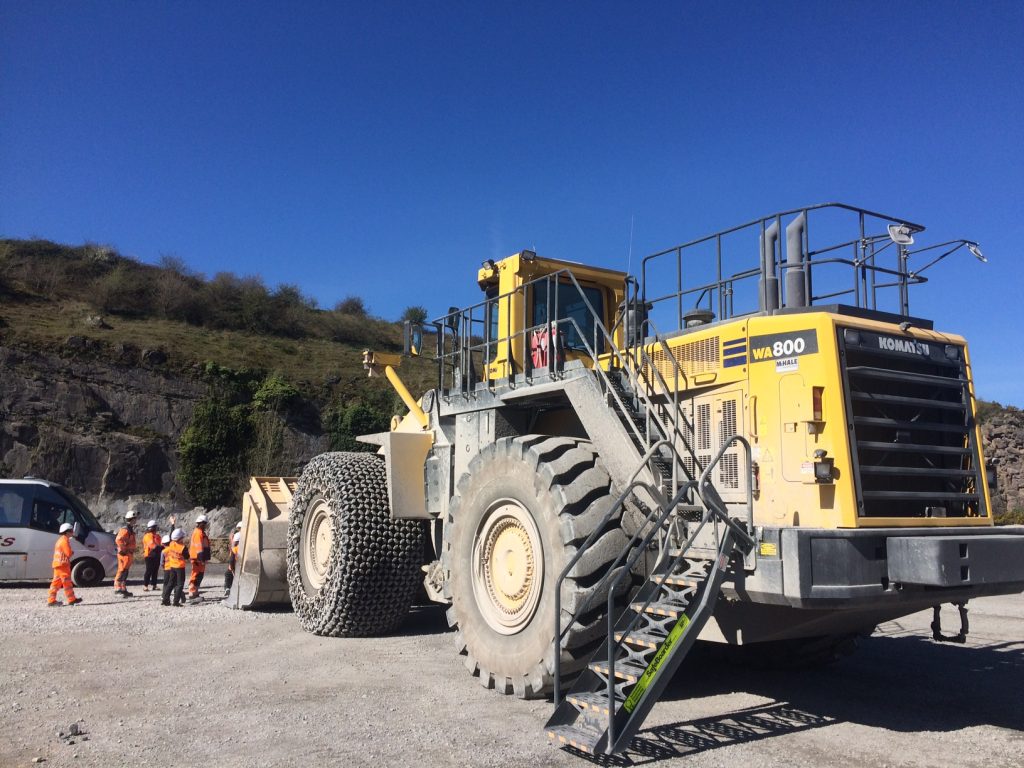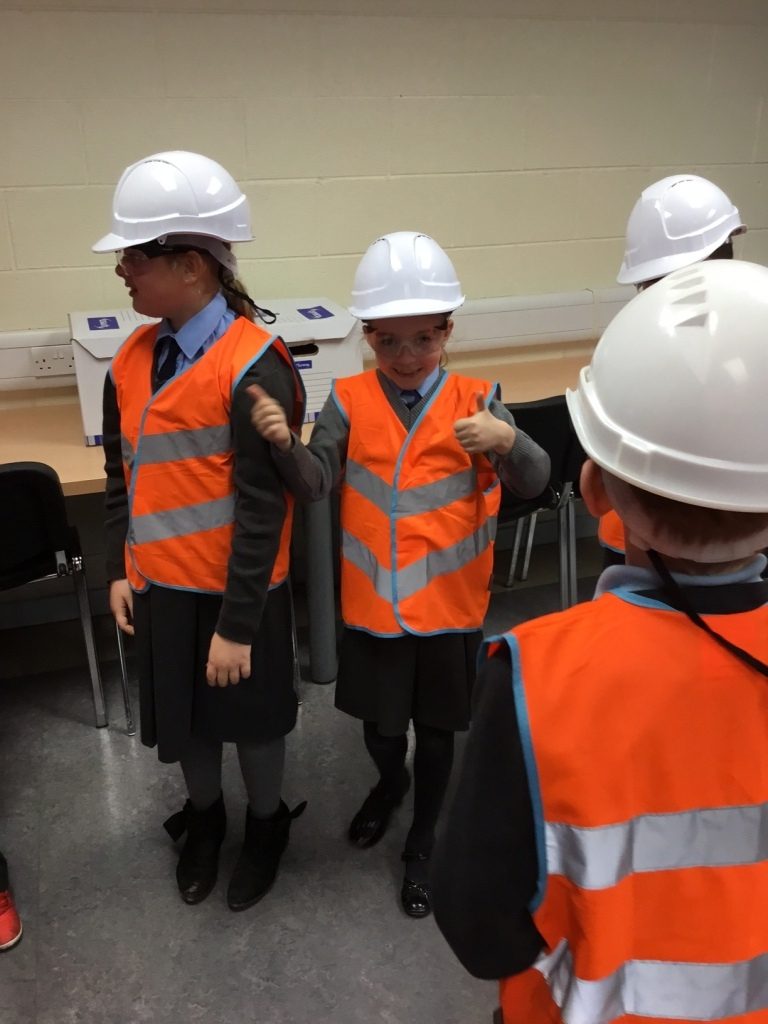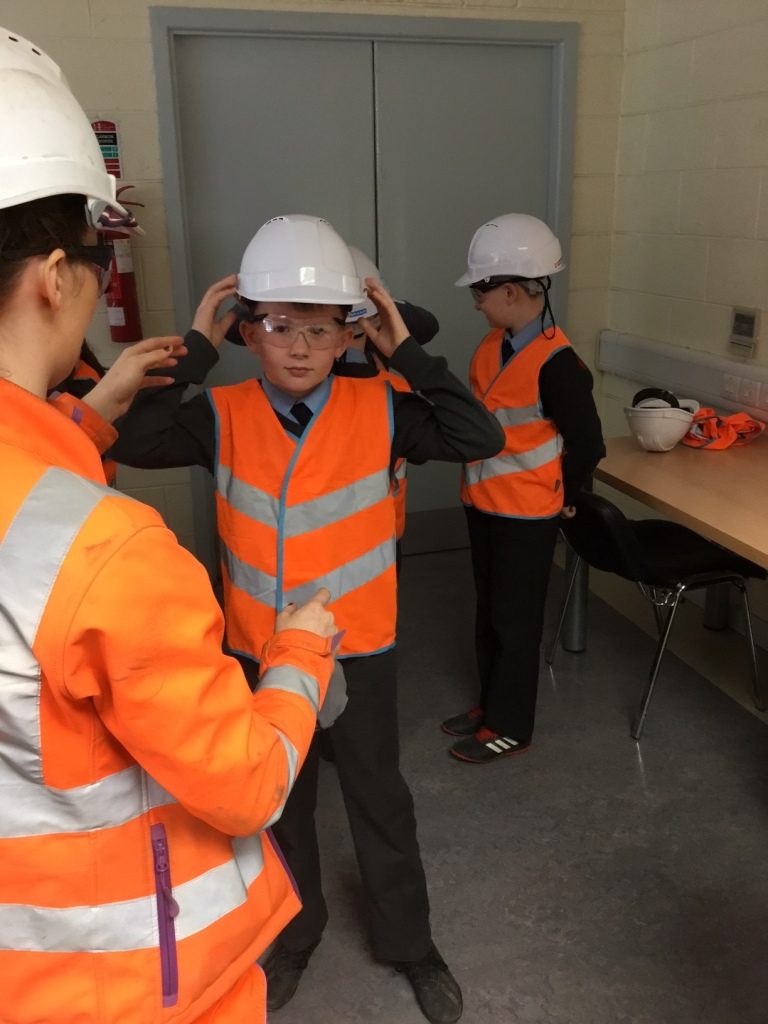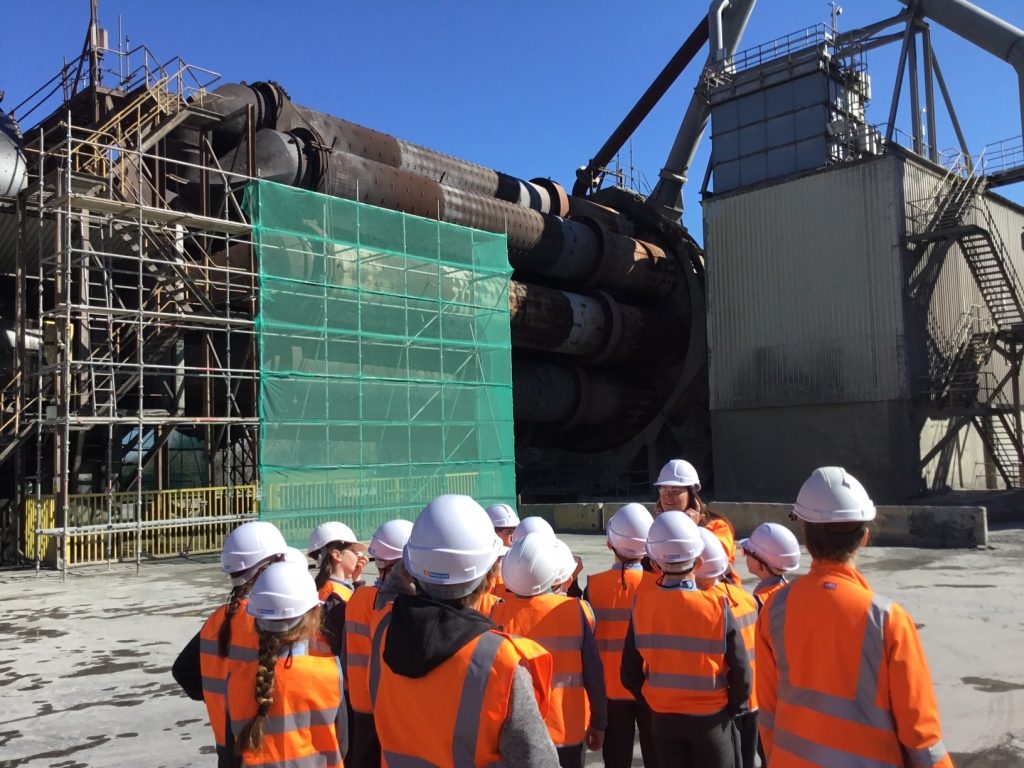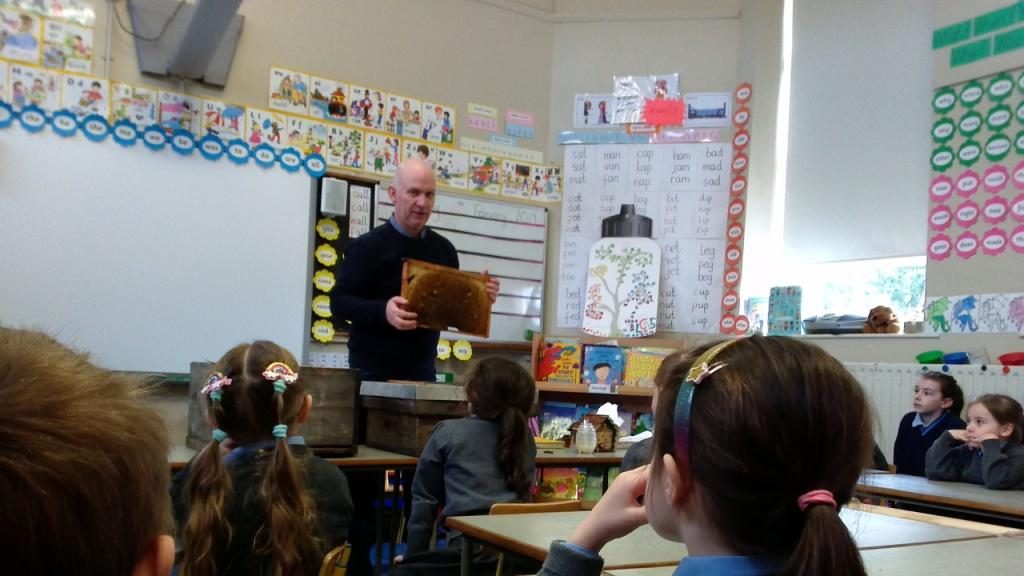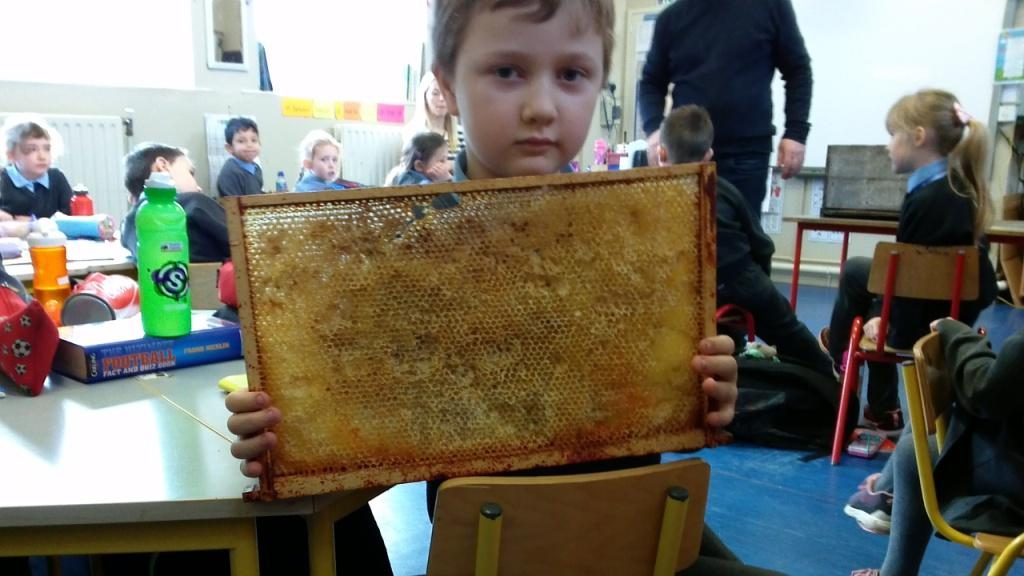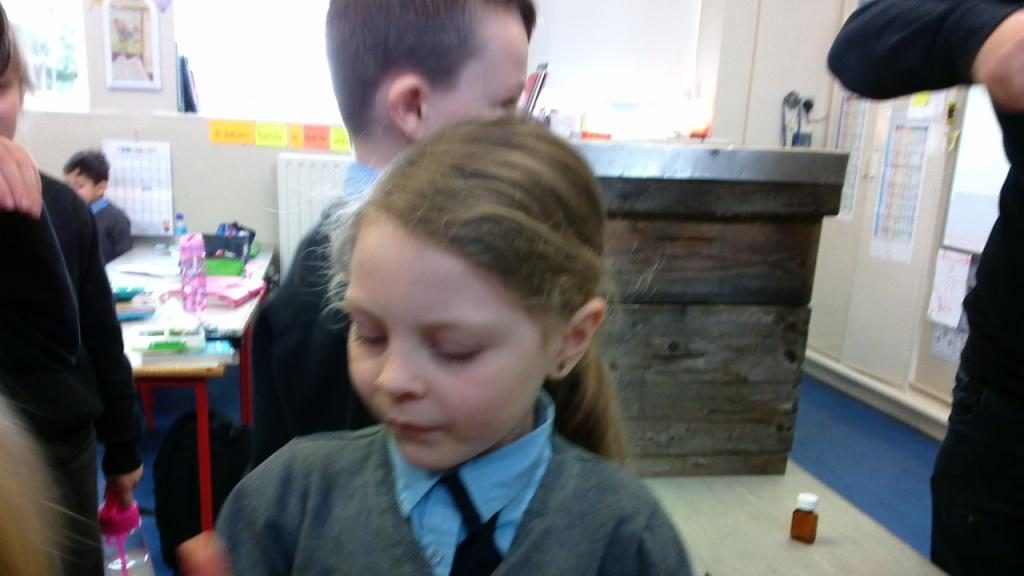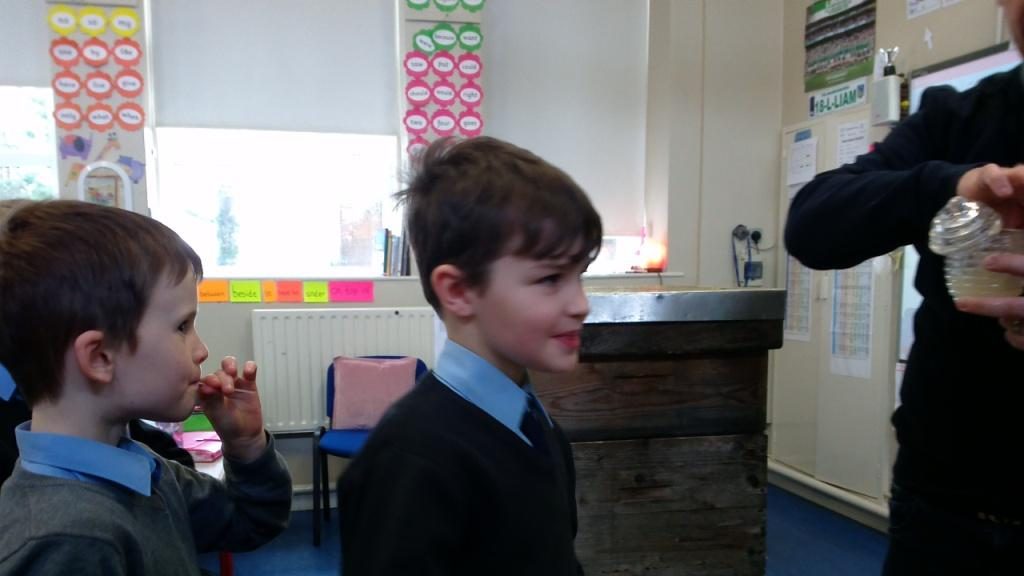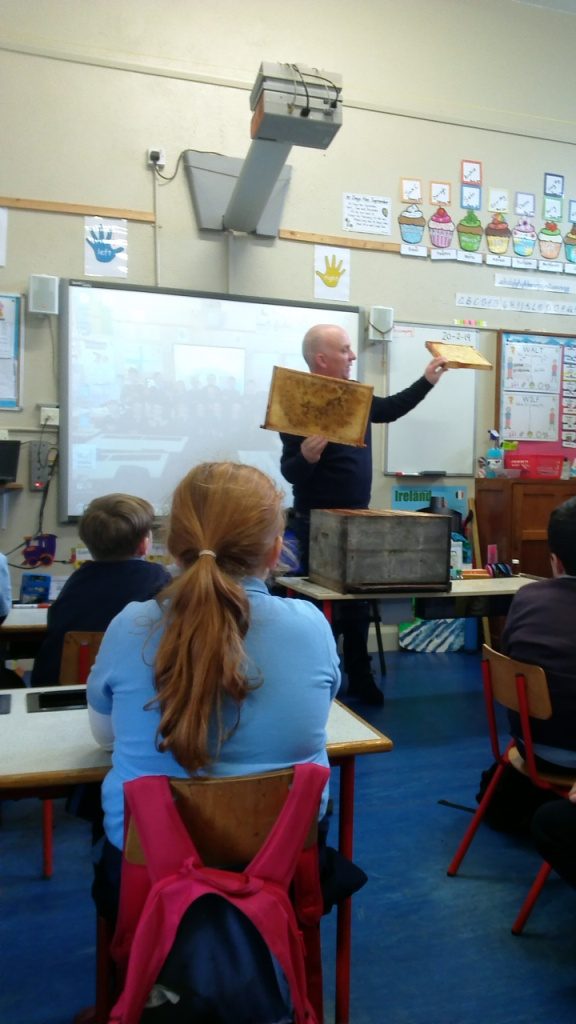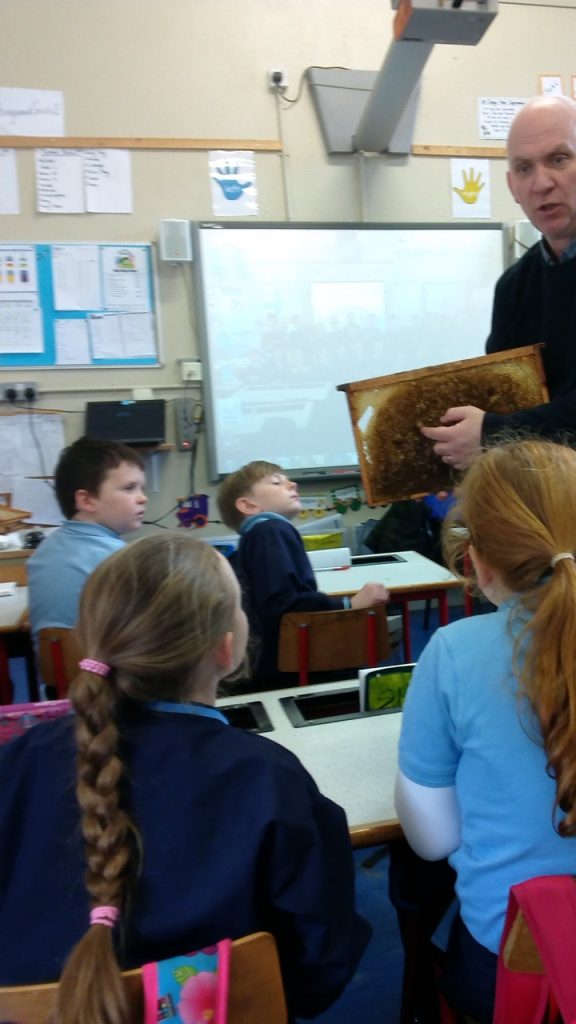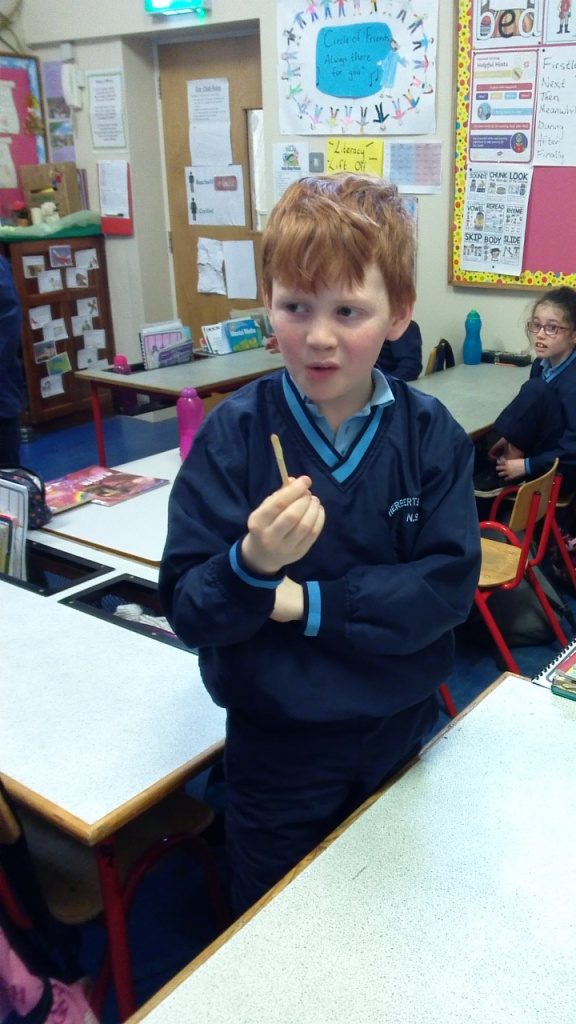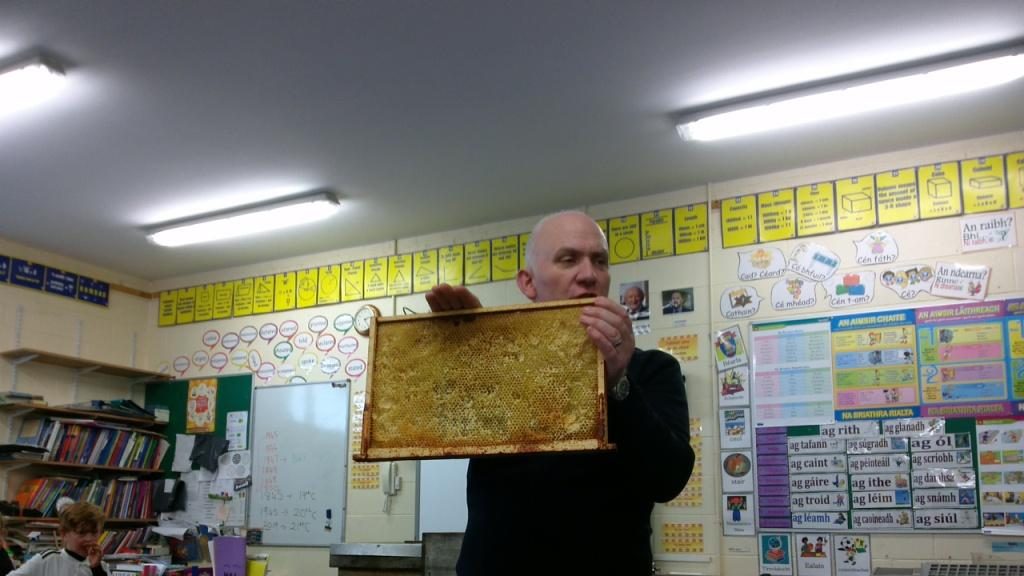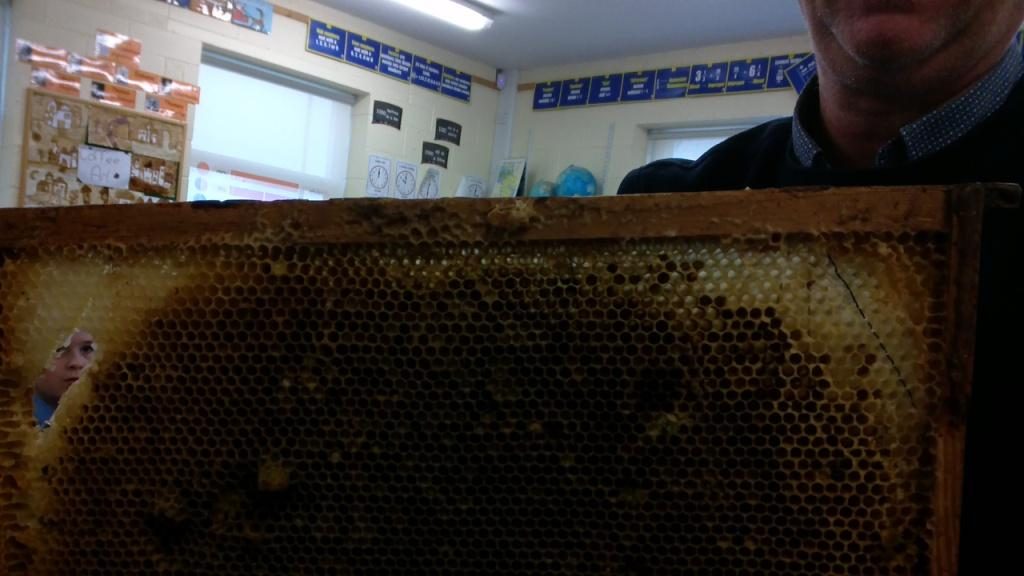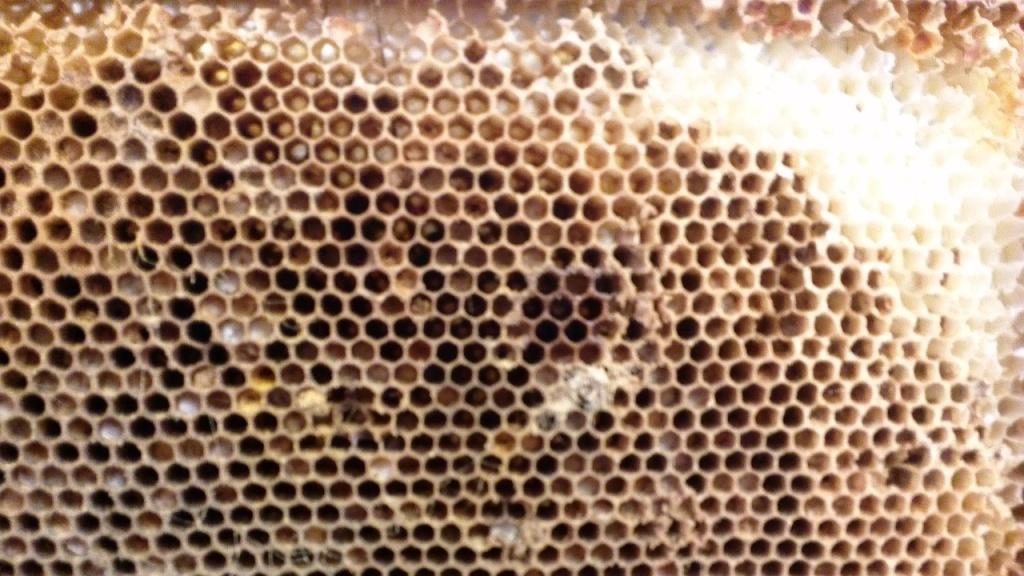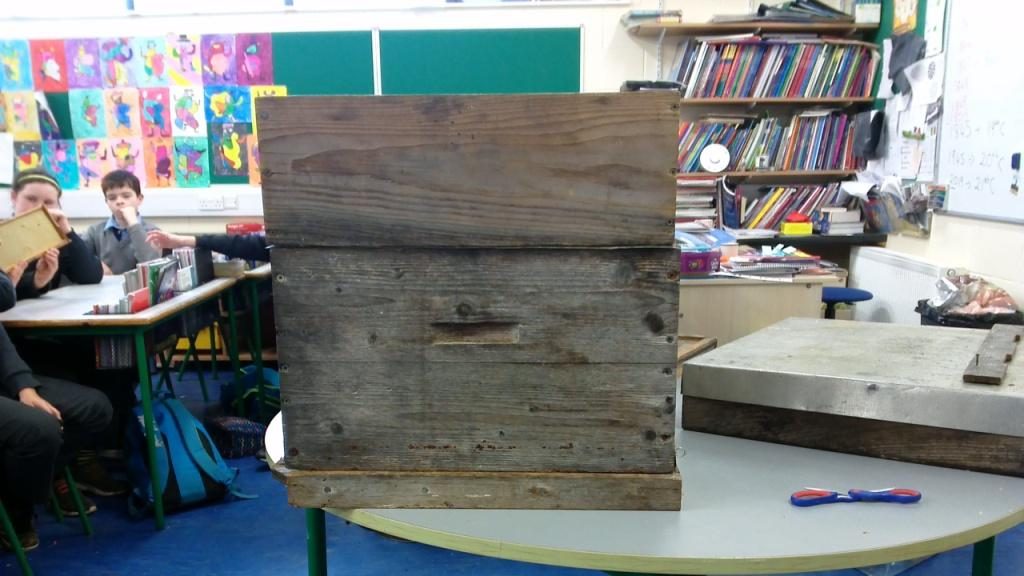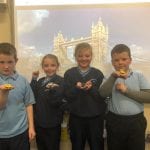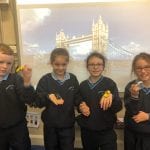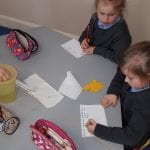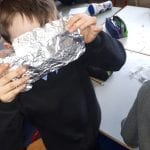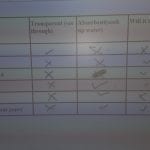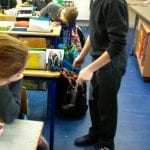Tag: SESE

Science Week
4th & 5th Class look at a couple of practical experiments as part of Science Week 2019.
Experiment 1: The pupils looked at how a simple Carbon Dioxide fire extinguisher works.
Firstly, baking soda was added to vinegar in a jug. This created a reaction where carbon dioxide was produced. Due to the fact that carbon dioxide is more dense than air, the carbon dioxide stayed in the jug for the most part (although it was not visible).
Pupils where then able to ‘pour’ the carbon dioxide onto a candle and extinguish the flame.
Experiment 2: Hot Water vs Cold Water
In experiment 2 the children observed how hot water is less dense than cold water. This was demonstrated by placing a glass of hot water on top of a glass of cold water. The hot water (which had green food colouring in it) stayed on top of the cold water (which was blue). To further prove the theory, we repeated the steps of the experiment but this time placed the cold on top of the hot water. In this instance, the cold water rushed downwards and mixed with the hot as the hot itself would have initially have been trying to rise.

Crystal Drop Workshop – Fourth Class
Martin and Louise from SSPC came to the school on Wednesday morning to for a workshop which featured a talk about crystals and also saw the children getting the chance to design and make a device which could safely ‘drop’ a crystal to the ground.
The boys and girls had a great time designing their devices and then working in small groups to construct their design using a finite set of resources.
The gallery and videos below show the children working on their designs and also testing them when completed.
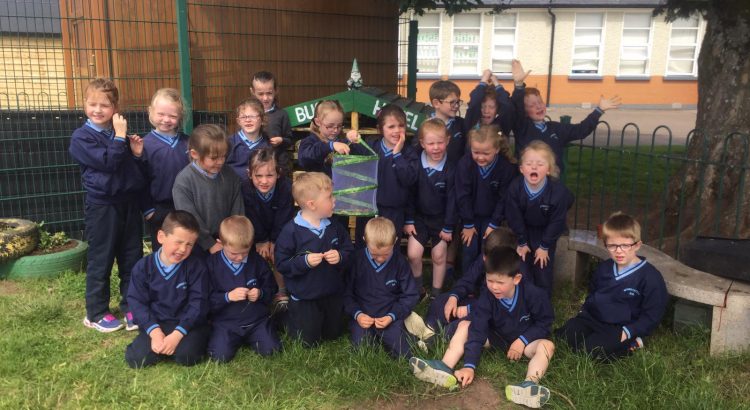
Infants Release Butterflies!
Mrs Murphy’s class have watched the life cycle of butterflies in recent weeks and released them earlier today in Herbertstown.

Pilot Pays Flying Visit to Herbertstown
Captain Barry Cason visited the school to talk to the children about all aspects of being a pilot.
Captain Cason was paying his second visit to Herbertstown NS having spoken to the then 5th & 6th class in 2017.
The airline pilot answered the children’s questions and talked about how he came to be a pilot. He brought some videos and pictures with him to help illustrate what his job entails and told many stories about his experiences both as a cargo pilot and as a commercial or passenger jet pilot.
Cpt. Cason said afterwards that he really enjoyed the visit and was very impressed by the children’s questions.

Third Class Tour Irish Cement Factory
Our third class visited the Irish Cement factory in Mungret for a tour of the facility. Concrete is the second most commonly used material in the world (after water) and the children got to view how the cement is manufactured.
Below is an account of their experiences and a gallery of photos from the trip.
Irish Cement
Today 3rd class went to the Irish Cement factory in Mungret, County Limerick. They organised a bus to come and collect us at the school at 10.ooam. So we all got on the bus!
When we got there they brought us into reception. In there we met Elaine, Caoimhe and John. They said they would be our guides for the day so they showed us a slide show and a video about how cement is made. Elaine showed us some rocks: Limestone and shale.
Next we went down to the quarry and saw a big truck. We all went into the shovel and for a picture. They told us that every Thursday the guards come while they blow up a bit of the quarry. Then we went to the kiln and put our arms up to see how hot it is. Then we went back and took off all our safety gear. They gave us all a bag with goodies in it before we went back to school.
Molly
The Kiln
After the quarry we went to the kiln. The kiln is very hot. The rock has to reach 1450 degrees for the rock to melt. It can get to 2000 degrees, hotter than a volcano!
Ciarán
A kiln is a big round machine like a cylinder. Elaine told us to put up our hands and feel the heat!
Liam
The Quarry
The first stop on the tour was the quarry where we saw the loading shovel. It was massive! It had a bucket that could hold over 20 people.
Sinéad

The Bee Man
A bee man called Benny came to our school to talk to us about bees. He said bees are good for the environment but their population is slowly decreasing. He also brought in a hive to show us, the main parts of a hive are the brood chamber, the stand, the super and the frames. There are three types of bees, the queen and the worker bees who are the females and the males are called drones ,but the drones don’t work. A bee can travel up to 5 km for food. A good queen bee can lay around 2000 eggs a day. In winter bees don’t hibernate, they must fly every 6 weeks. If you happen to own a hive you must put a mouse guard in front of the bottom so mice don’t get in during winter. After winter most of the drones will be evicted from the hive because they barely do anything. When you get a queen bee you must clip her wings so she doesn’t fly away. You would find the queen bee in the queen cell which is located in the brood chamber. Benny said that he feeds his queen bee with something he calls royal jelly. It is important you stay quiet if you are near a hive so you don’t scare the bees away from the hive. About a week after Benny came to our school he sent down tests for us to complete. Erika got the highest score in the test. Tadhg, 6th Class
A bee man called Benny came to our school to tell us about bees. He said that they are actually good for the environment. A female bee is called the worker and the male bees are called drones. When the female bees get cross the male bees will be evicted from the hive. The total distance the bees covered to make a jar of honey is 100KM. To keep mice out over the winter we usually use a mouse guard. The Queen cell is found in the brood chamber. The Queen lays approximately 2000 eggs a day. We know the Queen bee from the rest because she is the biggest and a spot is painted with paint. The gap at the front of the hive is 9mm. The frame of honey in the super is made from timber and wax. Aoibhinn, 5th class.
Photos from Juniors/Seniors
Photos from Seniors/First
Photos from Second & Third
Photos from Fifth & Sixth
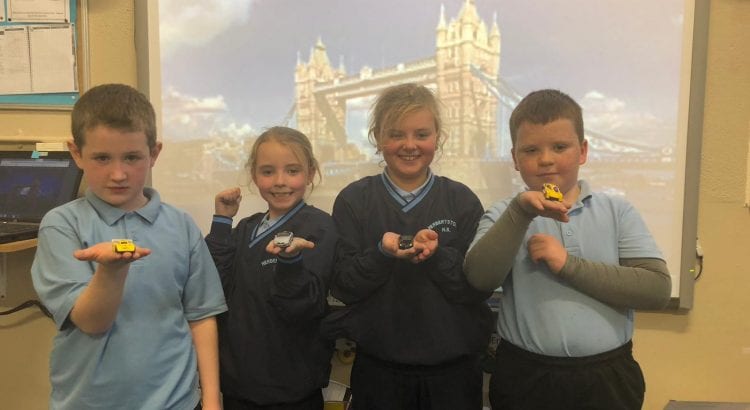
2nd and 3rd Class Become Engineers for Science Week
Mr. Gubbins’ class became architects and engineers for science week when they looked at how bridges are built.

Science Week in Full Swing
Science Week is in full swing in Herbertstown NS!
In the Senior Infants/1st classroom the boys and girls have been busy exploring materials and their properties.
In third/fourth class the pupils investigated how sound travels through different materials. The experiment involved using a clothes hanger and string to tap off objects and observe the sound made. The pupils then repeated this while holding the string in their ears. The experiment produced some interesting results!
Third/Fourth also investigated the buoyancy of objects in fresh water vs salt water.
Year Long Investigation into Pumpkins
Our current fourth/fifth class completed a year long investigation into the life cycle of pumpkins.
In October of 2017 we harvested the seeds from a shop-bought pumpkin which we were using for our Halloween Jack O’Lantern. We cleaned the seeds and placed them in a cool, dry place until 2018.
In the Spring of 2018, we planted the seeds in small cups and placed them on the classroom windowsill. From here we monitored their growth and ensured they were getting plenty of sunshine and water. After a couple of weeds we transplanted the now growing plants to larger pots.
Once the plants were large enough, we started to harden off the plants by placing them outside during the day and taking them in before hometime.
Finally, before the holidays, the pupils were able to bring them home for their own gardens.
Here are some pictures below of the pumpkins the children grew from their plants!
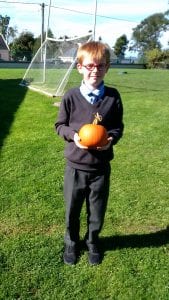
One of the pumpkins on a visit to the school!
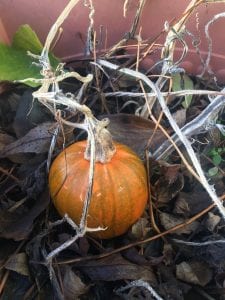
Luke’s pumpkin

Katie’s Pumpkin

Christian’s pumpkin



